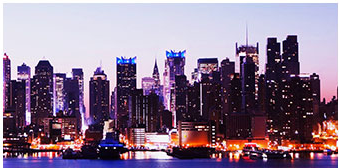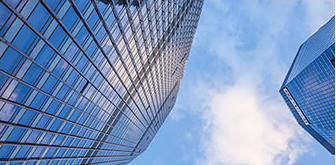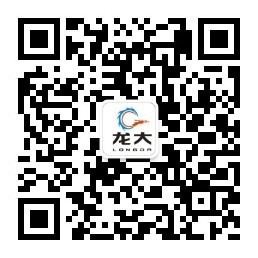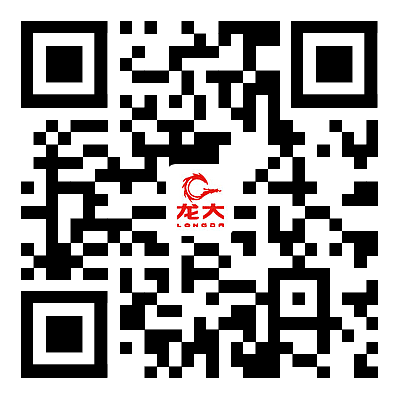Welcome to the official Website of Puyang Longda Nonwovens Co., Ltd.
Nonwoven characteristics
Time:
2017-03-14
The nonwoven fabric is a nonwoven fabric which is used to directly use the polymer chips, short fibers or filaments to pass the fibers through air or mechanical webs, and then through spunlace, needle
The nonwoven fabric is a nonwoven fabric which is used to directly use the polymer chips, short fibers or filaments to pass the fibers through air or mechanical webs, and then through spunlace, needles, or hot-rolled reinforcement, and finally after finishing The formation of non-woven fabric. With the soft, breathable and flat structure of the new fiber products, the advantage is not produce fiber debris, tough, durable, silky soft, but also a reinforced material, but also the feeling of cotton, cotton and cotton compared to non-woven Cloth bag easy to shape, and the cost of cheap.
Material Features:
1. Light weight: polypropylene resin as the main production of raw materials, the proportion of only 0.9, only three-fifths of cotton, with fluffy, feel good.
2. Soft: composed of fine fibers (2-3D) light-like hot-melt adhesive forming. Finished softness moderate, with a sense of comfort.
3. Water, breathable: Polypropylene slices do not absorb water, moisture content of zero, finished water good, from 100% fiber composition with porous, good ventilation, easy to keep the fabric dry, easy to wash.
4. Non-toxic, non-irritating: products used in line with FDA food-grade raw materials production, excluding other chemical composition, stable performance, non-toxic, no smell, do not stimulate the skin.
5. Antimicrobial, anti-chemical agents: Polypropylene is a chemical blunt material, not moth, and can isolate the existence of liquid bacteria and insects within the erosion; antibacterial, alkali corrosion, the product does not affect the intensity due to erosion.
6. Antibacterial. Products with water, not mold, and can isolate the existence of liquid bacteria and insects within the erosion, not mildew.
7. Good physical properties. From polypropylene spinning directly paved into a hot bond, the strength of the product is better than the general staple fiber products, the strength of non-directional, vertical and horizontal intensity similar.
8. In terms of environmental protection, most of the raw materials currently used are non-woven polypropylene, while the raw material of plastic bags is polyethylene, although the two substances are similar in name, but the chemical structure is very different. Polyethylene chemical molecular structure has a very strong stability, very difficult to degrade, so the plastic bags need 300 years to break down; and polypropylene chemical structure is not strong, the molecular chain is easy to break, which can be effectively degraded , And in the non-toxic form into the next cycle of the environment, a non-woven shopping bags in 90 days can be completely decomposed. And non-woven shopping bags can be reused more than 10 times, the pollution of the environment after the pollution is only 10% of plastic bags
Disadvantages
1) Poor strength and durability compared to textile fabrics
2) can not be washed like other fabrics
3) fibers arranged in a certain direction, so easy to split from the right angle and so on. Therefore, the improvement of the production method has been mainly focused on preventing the improvement of the division.
Use this section
(1) medical and health non-woven fabrics: surgical clothing, protective clothing, disinfection cloth, masks, diapers, civilian wipes, wipes, wet towels, magic towels, towels, beauty products, sanitary napkins, health care Mats, and disposable hygiene fabrics
(2) home decoration with non-woven fabrics: posted wall cloth, tablecloths, bed sheets, bedspreads and so on
(3) clothing with non-woven fabrics: lining, adhesive lining, flakes, stereotypes cotton, all kinds of synthetic leather fabric, etc.
(4) Industrial nonwovens; Roofing waterproofing and asphalt tile substrates, reinforcing materials, polishing materials, filter materials, insulating materials, cement bags, geotextiles, covering cloth, etc.
(5) agricultural non-woven fabrics: crop protection cloth, nursery cloth, irrigation cloth, insulation curtains, etc.
(6) other non-woven fabrics: space cotton, insulation materials, suction felt, smoke filter, bags of tea bags, shoes, etc.
Edit this paragraph classification
Nonwovens production fiber is mainly polypropylene (PP), polyester (PET). In addition, there are nylon (PA), viscose fiber, acrylic, sponge (HDPE), polyvinyl chloride (PVC). According to the application requirements, non-woven fabrics are divided into one-time application and durable two categories.
Nonwovens product classification
In accordance with state regulations, from June 1, 2008 to use in line with national standards after the use of plastic bags. So what kind of plastic bags are in line with the standards, in line with the standard plastic bags have what characteristics? Our reporter today specifically to study the experts in the study of plastic products.
China Plastic Association Plastic Recycling Professional Committee Vice Chairman Dong Jinshi to explain the unqualified ultra-thin plastic bags why not use, how to identify, qualified plastic bags have four characteristics: product function information, material information, standard information, production company information The
Non-compliant plastic bags are basically thin, with a finger gently poke, you can poke out a hole, and the national standard plastic bags are generally thick, fingers are difficult to puncture. General supermarkets in the use of plastic bags in the 6 to 10 kg, Dong Jinshi take 6 kg of beverage bottles made a simple test.
Dong Jinshi told reporters that in line with national standards of plastic bags have a variety of different uses. There are starch-based plastic bags, as well as biodegradable plastic bags, ordinary plastic bags, etc., but the plastic bag single-sided thickness must be more than 0.025 mm. Experts advise consumers, bread, noodles and other direct access to the food must be marked with "food bag" and "QS logo" this double identification of plastic bags.
According to the production process is divided into:
1. Spunlaced non-woven fabric: spunlace process is the high-pressure fine water jet to one or more layers of fiber network, so that the fibers are tangled together, so that the network can be reinforced with a certain strength.
2. Heat-bonded non-woven fabric: hot-bonded non-woven fabric is added in the fiber network or powder-like hot-melt adhesive reinforcement material, and then heated by heating and cooling into a cloth.
3. Pulp air into non-woven fabrics: air-laid non-woven fabrics can also be called dust-free paper, dry paper-making non-woven fabrics. It is the use of air-laid technology to open the wood pulp fiber board into a single fiber state, and then use the air flow method to agglutinate the fiber into the curtain, the fiber mesh and then reinforce the cloth.
4. Wet non-woven fabric: wet non-woven fabric is placed in the water medium of fiber raw materials open into a single fiber, while mixing different fiber raw materials, made of fiber suspension pulp, suspended pulp transported to the network mechanism, The fibers are re-laid into cloth in the wet state.
5. Spunbond non-woven fabric: Spunbond non-woven fabric is in the polymer has been extruded, stretching and the formation of continuous filament, the filament laying into a net, the fiber mesh and then through its own bonding, thermal bonding, Bonding or mechanical reinforcement method, so that the network into a non-woven fabrics.
6. Meltblown non-woven fabrics: melt-blown non-woven process: polymer feeding --- melt extrusion --- fiber formation --- fiber cooling --- into the net --- reinforced into cloth.
7. Acupuncture non-woven fabrics: acupuncture non-woven fabric is a dry non-woven, acupuncture non-woven fabric is the use of puncture needle puncture, the fluffy fiber reinforced into a cloth.
8. Stitching non-woven fabrics: stitched non-woven fabric is a dry non-woven, sewing method is the use of warp-knitted coil structure of the network, yarn layer, non-woven materials (such as plastic sheet, plastic thin Metal foils, etc.) or a combination thereof to be made into a nonwoven fabric.
9. hydrophilic non-woven fabrics: mainly for the production of medical and health materials to achieve a better feel and not scratch the skin. Want sanitary napkins, sanitary pads is the use of hydrophilic non-woven hydrophilic function.
The difference between nonwovens and clean cloth
Nonwovens, also known as non-woven, is a new generation of environmentally friendly materials, with water repellent, breathable, flexible, non-combustion, non-toxic non-irritating, rich colors and so on. Nonwovens if placed in the outdoor by natural decomposition, the longest life of only 90 days, placed in the room within 5 years of decomposition, burning non-toxic, tasteless, and without any legacy material, which does not pollute the environment, suitable for washing. It utilizes high-profile slices, short fibers or filaments to form new fiber products with a soft, breathable and planar structure formed by a variety of web forming methods and consolidation techniques. It has a plastic products do not have the environmental performance, its natural degradation time is much lower than the plastic bags, therefore, made of non-woven non-woven bags are also recognized as the most economical and environmentally friendly shopping bags.
Clean cloth made of 100% polyester fiber double woven, the surface is soft, easy to wipe the sensitive surface, the friction does not escape fiber, with good water absorption and cleaning efficiency. Product cleaning and packaging are completed in the ultra-clean workshop. Clean cloth optional Edge are generally: cold cutting, laser edge, ultrasonic edge. Ultra-fine fiber clean cloth with 100% continuous polyester fiber double woven fabric surface is soft, available, the use of ultra-fine fiber In the wipe sensitive surface, the production of low dust and friction does not escape fiber, a good water absorption and cleaning efficiency. Particularly suitable for clean clean workshop. Clean cloth, clean cloth, ultra-fine fiber clean cloth, ultra-fine fiber wiping cloth edge is the most advanced cutting edge machine edge, wiping will not leave the particles and thread, decontamination ability. [1]
Edit this paragraph
First, non-woven textile industry in recent years has made great progress
As of 1998, the world's non-woven consumption has reached 2.4 million tons. In 1970, its consumption was only 400,000 tons, and by 2007, its consumption is expected to reach 4 million tons.
Recommend










